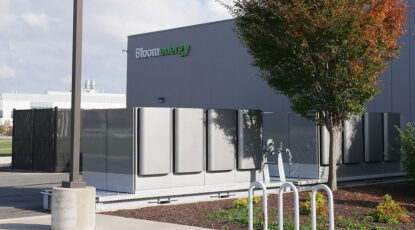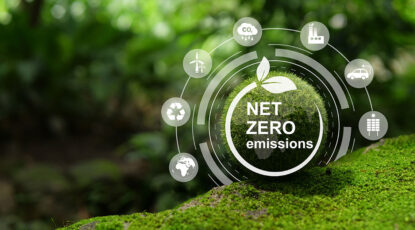Every year, California’s landfills, waste water treatment facilities and dairies generate about 80 million MMBtu of biogas.
That gas is rich in methane which has a 25 times greater impact on climate change than carbon dioxide emissions. In fact, each year California generates methane with the equivalent emissions of burning about 44 billion pounds of coal.
The detrimental impact to the environment of emitting or flaring biogas is clear, but its tremendous untapped potential for generating electricity is less clearly understood.
Here’s a startling fact for you: 80 million MMBtu of biogas could generate as much electricity from a Bloom Energy Server as four million solar panels, 500 utility scale wind turbines or a Diablo Canyon nuclear reactor…about 1.26 GW of electric power.
That’s the new challenge that Bloom Energy is taking on: to generate clean electric power by using biogas in our fuel cells and to dramatically cut methane emissions from human activity in the process.
“Wait!” I hear you cry, “Hasn’t this been tried before?”
Well, yes, it has, but efforts to capture and utilize biogas with fuel cells for heat and power generation have largely disappointed in the past.
The complexity and cost of removing moisture and contaminants from biogas that affect fuel cell performance; the low efficiency with which legacy systems convert biogas to electricity, and the poor reliability and short life-expectancy of legacy fuel cell systems have all contributed to disappointing outcomes.
However, we think that’s about to change.
At the Global Climate Action Summit in San Francisco, Bloom Energy previewed a fuel cell-based electric power solution that should overcome the shortcomings of past biogas offerings.
We demonstrated how a standard Bloom Energy Server integrated with a new clean-up module can clean biogas of moisture and contaminants, enabling its use for electricity generation while dramatically reducing methane emissions in the process.
The technology has relevance worldwide, especially in developing countries and regions that lack a grid infrastructure at all.
It certainly has compelling environmental benefits: for every megawatt of electricity generated by a Bloom Energy Server running on biogas, we could avoid eight million pounds of CO2 emissions and thousands of pounds of NOx and SO2 emissions which cause asthma and other respiratory illnesses.
This month, we start our first customer pilot of the technology, and I look forward to telling you more about its impact soon. In the meantime, you can learn a little more from this recent TV report about our Bloom Energy Server biogas solution.



